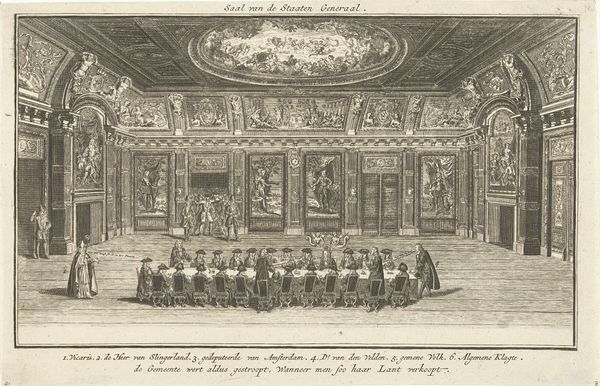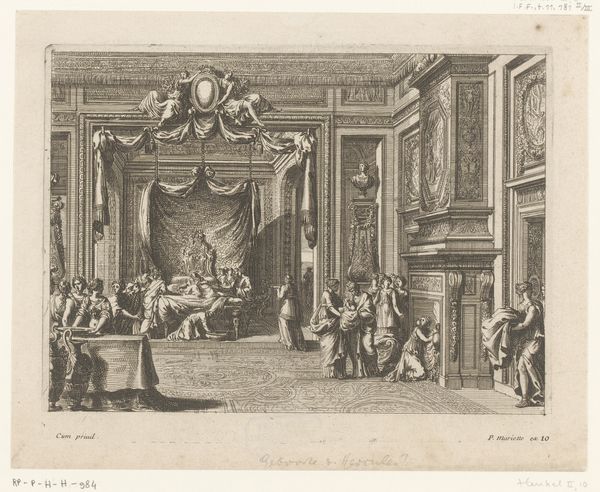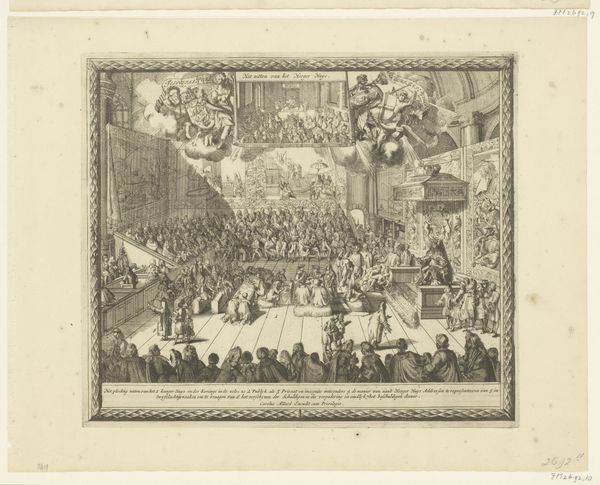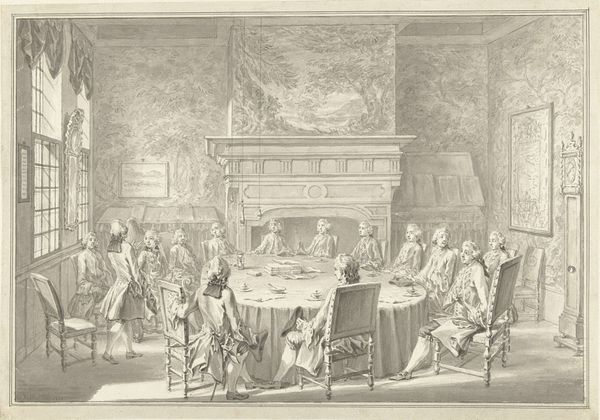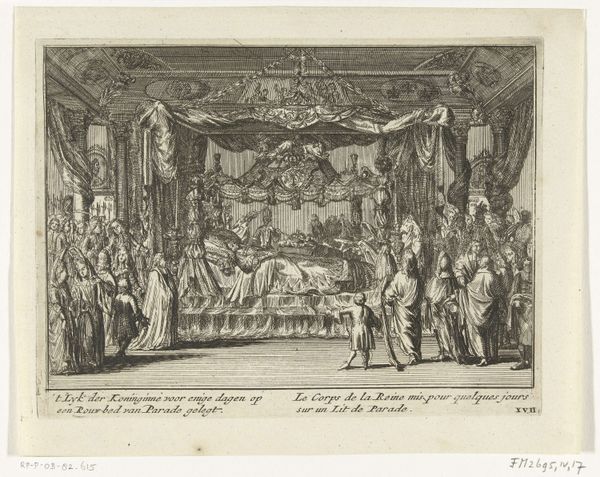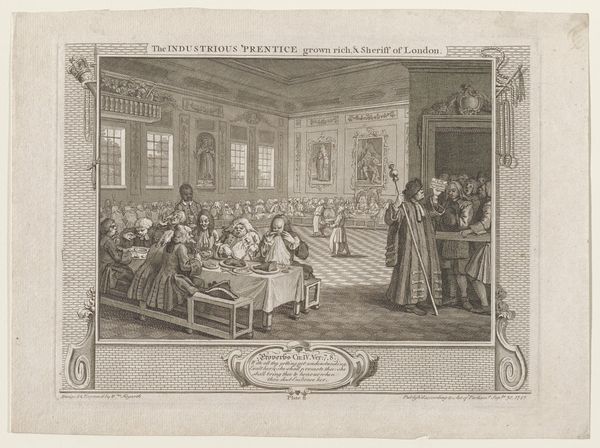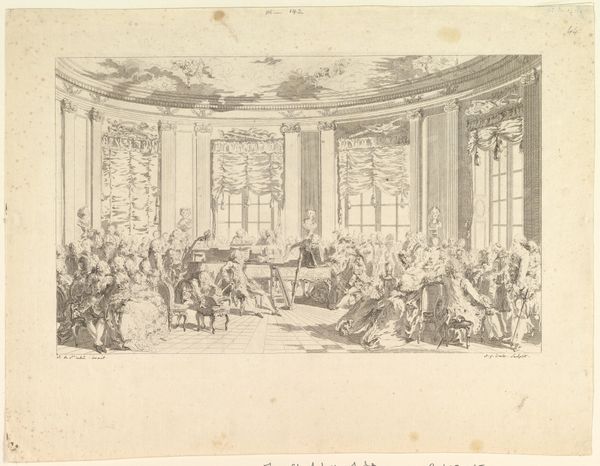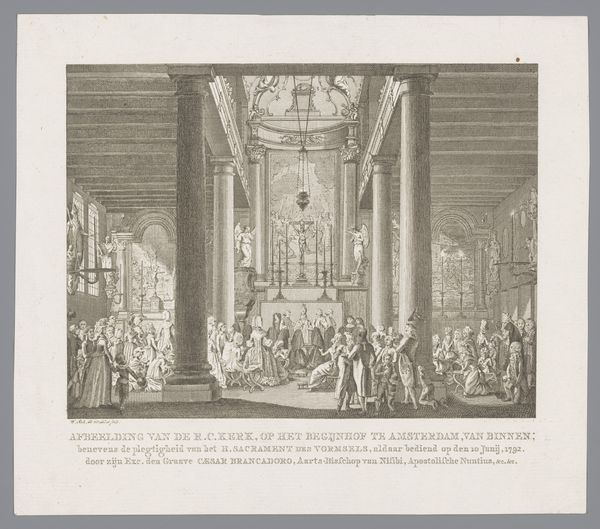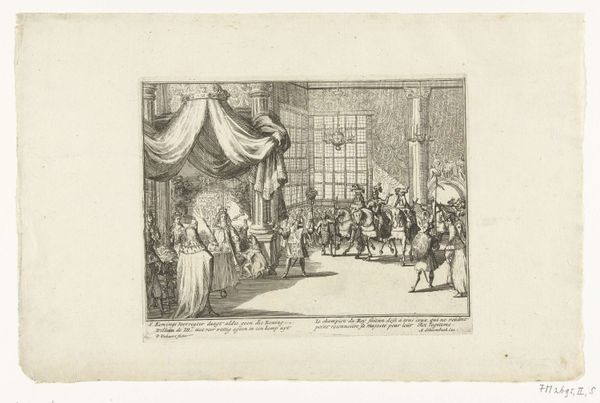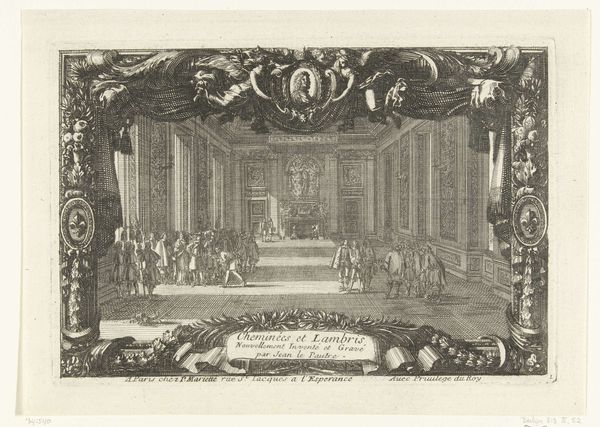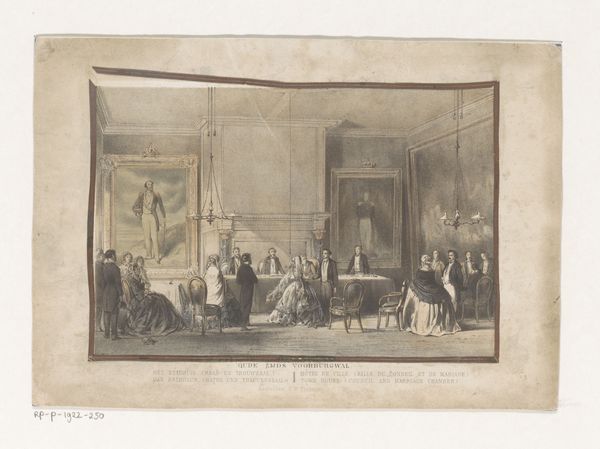
Wekelijks overleg door de Staten-Generaal in de Trêveszaal, 1738 1738
0:00
0:00
jancasparphilips
Rijksmuseum
engraving
#
baroque
#
genre-painting
#
history-painting
#
engraving
Dimensions: height 176 mm, width 332 mm
Copyright: Rijks Museum: Open Domain
Editor: This is an engraving by Jan Caspar Philips from 1738, titled "Weekly Meeting of the States General in the Trêves Hall." The level of detail is amazing, but it also feels very formal and staged. What's your take on it? Curator: Well, as a materialist, I find the engraving process itself fascinating. Think about the labor involved, the transfer of knowledge and skill required to create such detail using only metal and acid. It's not just about depicting the powerful; it's about the *means* of depicting them. How does the availability of this type of image affect the perception of the ruling class? Editor: That's a great point. I hadn’t considered the printmaking process itself as part of the meaning. So, the distribution of these engravings could have influenced public opinion about the government? Curator: Precisely! Consider the context: these images would have been relatively accessible compared to, say, a unique oil painting. Who was the intended audience, and how would this image have circulated? The materiality informs the message. Also, notice how the ornamentation in the room--sculptures, tapestries--visually reinforces the power dynamics enacted in that very space. The meeting isn't separate from its container; both shape one another. Editor: So, it's not just about who's in the room, but also how the image itself and the room function as tools of power. Curator: Exactly. Think about how the image flattens the scene into a repeatable product; and compare that accessibility of reproduction to those that can even afford entry into such a hall. That access is what defines power, right? How can such pieces then provide that, in miniature, for those that cannot participate in political discourse? Editor: This makes me see it very differently. I’m so focused on identifying historical figures that I forget to analyze the social context and implications of the work. Thank you! Curator: Of course! Art isn't made in a vacuum; it's always a product of its time and conditions, shaped by material forces and available means. Examining those tells us about the society it reflects and shapes.
Comments
No comments
Be the first to comment and join the conversation on the ultimate creative platform.
